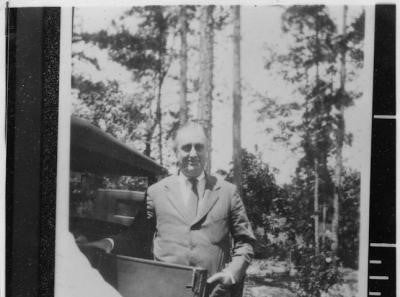President Franklin D. Roosevelt petitioned Congress for $10 million for the Prairie States Forestry Project in response to the catastrophic environmental and agricultural impacts of the Dust Bowl during the 1930s. His goal was to create a series of shelterbelts—rows of trees planted to act as windbreaks—across the Great Plains to combat soil erosion, improve agricultural productivity, and support environmental rehabilitation.
Reasons for the Prairie States Forestry Project
- Soil Erosion Control: The Dust Bowl had caused severe soil erosion, with massive dust storms stripping away fertile topsoil. Shelterbelts were designed to reduce wind speed, trap blowing soil, and stabilize the land, preventing further erosion.
- Agricultural Recovery: The drought and soil erosion had devastated farming in the Great Plains. Planting trees would create a more favorable microclimate for crops, helping to restore agricultural productivity and support farmers' livelihoods.
- Environmental Rehabilitation: The project aimed to rehabilitate the degraded environment by improving water retention in the soil and providing habitats for wildlife, contributing to ecological balance.
- Economic Relief and Job Creation: During the Great Depression, the project provided much-needed jobs and economic relief by employing people to plant and maintain the shelterbelts, aligning with the New Deal's broader goals of economic recovery.
- Long-term Sustainability: Establishing a protective tree cover aimed to promote long-term sustainability and resilience in the region, mitigating the impacts of future droughts and preventing another environmental disaster like the Dust Bowl.
The Petition and Its Outcome
In 1934, Roosevelt sought $10 million from Congress to fund the project. However, he did not receive the full amount requested. Congress allocated only $1.2 million initially, significantly less than Roosevelt had hoped for. Despite this, the project moved forward, albeit on a smaller scale than originally planned.
Grit and Determination in Implementation
Despite the reduced funding, the success of the Prairie States Forestry Project required tremendous grit and determination from all parties involved. Roosevelt's administration had to work closely with nurseries and farmers throughout the Midwest to source, plant, and maintain the millions of trees needed for the shelterbelts.
- Collaborating with Nurseries: Government agencies coordinated with nurseries to produce the vast number of seedlings required. This involved careful planning and resource allocation to ensure the nurseries could meet the demand and provide healthy, viable trees.
- Engaging Midwest Farmers: Convincing farmers to participate in the project required persistence and effort. Many farmers were initially skeptical, given their immediate concerns about crop production and survival. Government officials and extension agents worked tirelessly to educate farmers on the long-term benefits of shelterbelts and provided the necessary support and incentives to encourage participation.
- On-the-Ground Efforts: Planting and maintaining the trees was labor-intensive work. Thousands of workers, including many unemployed individuals from the Civilian Conservation Corps (CCC), were mobilized to dig holes, plant seedlings, and care for the growing trees. This effort required significant organization, coordination, and a strong work ethic from everyone involved.
Implementation and Legacy
Even with limited funding, the Prairie States Forestry Project achieved notable success. Between 1935 and 1942, approximately 220 million trees were planted across the Great Plains, covering over 18,000 miles in six states: North Dakota, South Dakota, Nebraska, Kansas, Oklahoma, and Texas. These shelterbelts helped reduce soil erosion, protected crops from wind damage, and contributed to the region's long-term environmental recovery.
The Prairie States Forestry Project is considered one of the New Deal's significant environmental initiatives, demonstrating the importance of integrating environmental sustainability into economic and agricultural policy. While Roosevelt did not get the full $10 million he sought, the project's legacy lives on in the improved resilience and productivity of the Great Plains. The grit and determination of those who worked on the project, from government officials to nursery workers and farmers, were crucial in achieving its success.
